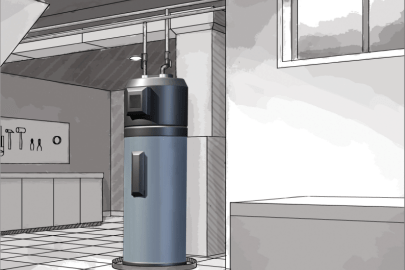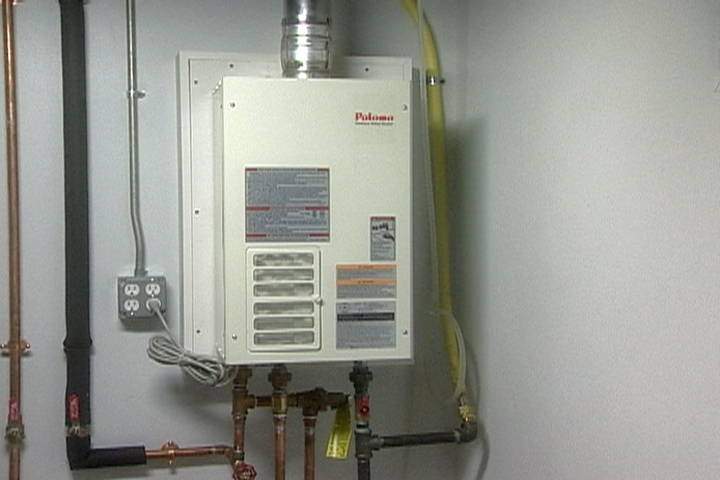Professional Guidance on Caring for Your Home's Hot Water SystemCaring for Your Home's Hot Water System: Key Guidelines
Professional Guidance on Caring for Your Home's Hot Water SystemCaring for Your Home's Hot Water System: Key Guidelines
Blog Article
Just about everyone has his or her own ideas on the subject of How to Maintain Your Water Heater & Prolong its Life.

Warm water is important for daily convenience, whether it's for a rejuvenating shower or washing recipes. To ensure your warm water system runs successfully and lasts longer, normal maintenance is crucial. This post offers functional suggestions and understandings on exactly how to maintain your home's warm water system to prevent disturbances and expensive fixings.
Introduction
Keeping your home's hot water system might seem daunting, however with a few straightforward steps, you can guarantee it operates smoothly for several years ahead. This guide covers whatever from recognizing your warm water system to DIY maintenance ideas and understanding when to hire expert aid.
Importance of Maintaining Your Hot Water System
Routine maintenance not just extends the lifespan of your hot water system yet additionally guarantees it runs efficiently. Neglecting maintenance can result in decreased performance, greater energy bills, and even early failure of the system.
Signs Your Hot Water System Demands Upkeep
Recognizing when your warm water system requires interest can avoid major issues. Keep an eye out for indications such as inconsistent water temperature, strange sounds from the heating system, or corroded water.
Purging the Water Heater
Flushing your water heater removes sediment accumulation, enhancing effectiveness and extending its life.
Monitoring and Changing Anode Rods
Anode poles stop corrosion inside the tank. Checking and changing them when worn is vital.
Complicated Problems Needing Expert Assistance
Instances include major leaks, electrical issues, or if your hot water heater is continually underperforming.
Regular Professional Maintenance Conveniences
Professional maintenance can include extensive evaluations, tune-ups, and making sure conformity with safety and security criteria.
Inspecting and Readjusting Temperature Level Settings
Changing the temperature level setups makes sure ideal efficiency and safety and security.
DIY Tips for Maintenance
You can perform a number of upkeep jobs on your own to maintain your warm water system in leading problem.
Checking for Leaks
On a regular basis check pipelines and links for leaks, as these can result in water damage and higher expenses.
Understanding Your Hot Water System
Prior to diving right into upkeep jobs, it's useful to recognize the standard components of your hot water system. Usually, this consists of the hot water heater itself, pipes, anode rods, and temperature level controls.
Monthly Maintenance Tasks
Routine month-to-month checks can assist capture small concerns before they intensify.
Checking Stress Relief Valves
Examining the pressure relief valve ensures it works properly and prevents excessive pressure accumulation.
Shielding Pipelines
Insulating hot water pipes lowers heat loss and can conserve power.
When to Call a Professional
While do it yourself maintenance is valuable, some problems call for specialist proficiency.
Final thought
Routine upkeep of your home's warm water system is crucial for efficiency, longevity, and cost financial savings. By following these suggestions and understanding when to look for professional aid, you can guarantee a trusted supply of hot water without unexpected interruptions.
Water Heater Maintenance: The Basics
Maintaining your water heater will ensure it operates efficiently and has a longer lifespan. Neglecting regular maintenance can lead to costly repairs and an even bigger chunk of your savings if you have to replace it sooner than necessary. But there’s good news: Most water heater maintenance tasks are relatively simple and easy for homeowners with basic DIY skills.
Flush the Water Heater
Over time, sediment and minerals can build up in the tank, reducing its efficiency and potentially causing damage. To flush the tank, turn off the power or gas supply, attach a hose to the drain valve near the bottom and open the valve to drain the water until it runs clear. Ideally, flush the tank annually.
Replace the Anode Rod
The anode rod is a sacrificial metal rod that helps prevent corrosion inside the tank. Inspect and replace it every three to five years or per the manufacturer's recommendation. To replace the anode rod, turn off the power or gas supply, drain a few gallons of water from the tank, unscrew the old rod and replace it with a new one. If the anode rod is significantly corroded or covered in calcium buildup, it's a sign the water heater may need to be replaced soon.
Tune-Up
A yearly tune-up can help identify potential issues and ensure your water heater operates at peak efficiency. This typically involves checking the thermostat, burner assembly (for gas heaters) and any other components specified by the manufacturer. During a tune-up, the technician may also clean the burner and adjust the pilot light (for gas heaters) or examine the heating elements (for electric heaters).
How to Maintain Your Water Heater
Insulate the tank. Insulating the tank can improve energy efficiency and reduce heat loss, saving you money on energy bills. You can purchase precut insulation blankets designed specifically for water heaters or use standard fiberglass insulation wrapped securely around the tank. Check the temperature. The recommended water temperature for most households is around 120 degrees Fahrenheit (49 degrees Celsius). Higher temperatures can increase energy costs and potentially cause scalding. Use a kitchen thermometer to check the temperature at the faucet nearest the water heater. Monitor water pressure. Excessive water pressure can strain the water heater and cause leaks or even tank failure. Install a pressure-reducing valve if necessary. The ideal water pressure range is between 60 and 70 PSI (pounds per square inch). Test the temperature and pressure (T&P) relief valve. The T&P relief valve is a safety feature that releases pressure if the tank gets too hot or the pressure builds up too high. Test it annually by lifting the lever and allowing a small amount of water to release. Replace the valve if it doesn't release water or reseal properly. Check for leaks. Regularly inspect the tank, pipes and fittings for leaks or corrosion. Deal with issues promptly to prevent further damage. Even a small leak can lead to significant water damage over time. Consider a tankless water heater. If your traditional tank-style water heater is nearing the end of its lifespan ( typically 10 years), consider replacing it with a tankless water heater. These units heat water on demand, reducing standby energy losses and potentially saving you money on your energy bills. Schedule professional maintenance. While homeowners can perform many water heater maintenance tasks, it's still a good idea to schedule professional maintenance every few years. A plumber or HVAC technician can thoroughly inspect the unit, identify potential issues and ensure it operates safely and efficiently. https://www.homeserve.com/en-us/blog/home-improvement/hot-water-heater-maintanence/

I hope you enjoyed our excerpt about What Kind of Maintenance Do Water Heaters Need?. Thanks a lot for taking a few minutes to read through our article post. For those who liked our post plz don't forget to share it. Thanks so much for your time spent reading it.
Apply Now Report this page